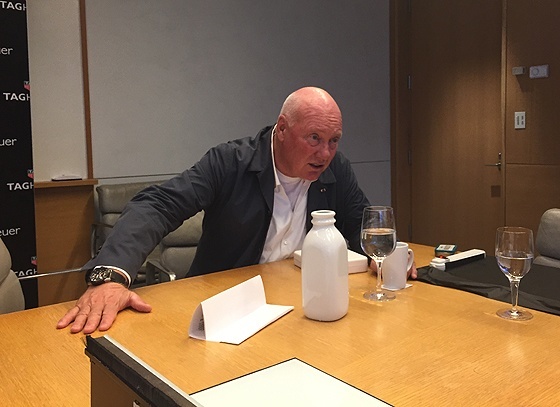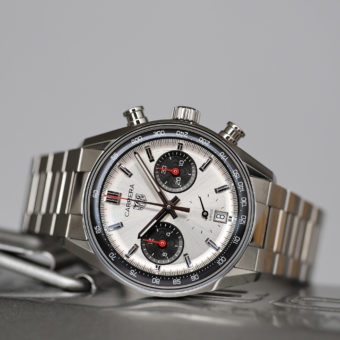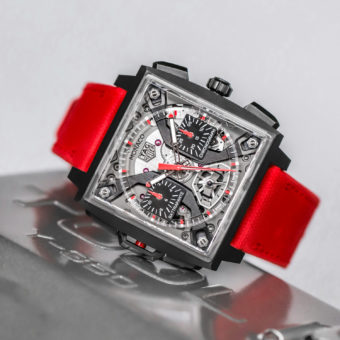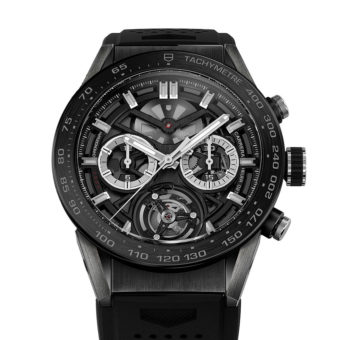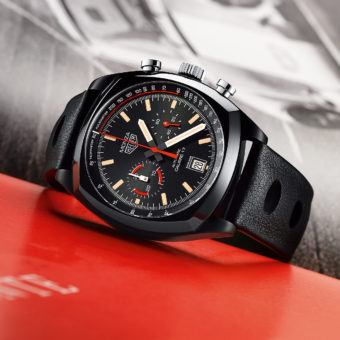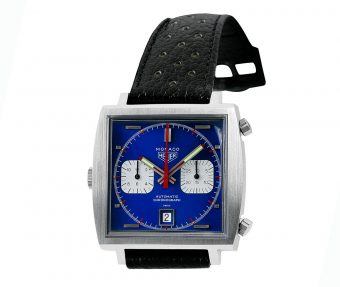The biggest news in the watch world this week was the launch of the TAG Heuer Connected, a “smartwatch” developed by the Swiss brand in partnership with Google and Intel. (Click here for our detailed report on the watch). After the launch, I had the opportunity to speak with the man behind the ambitious project, TAG Heuer CEO and President of LVMH Watch Division Jean-Claude Biver.
WT: You oversee a small group of brands at LVMH — Zenith and Hublot as well as TAG Heuer — so what made you decide that TAG Heuer was the right brand for a connected watch?
JCB: It was the price structure. The average price of a Hublot is $22,500, The entry-level price for a Hublot is $5,000. Can Hublot produce a connected watch at $1,500 when the entry price is $5,000? I doubt it. Can Hublot produce a smartwatch when it does just 30,000 watches per year? How could it make a smartwatch with such low quantities? For Hublot, it’s forbidden to touch something like a connected watch.
WT: Because you’re undercutting the entry-level price.
JCB: And because you wouldn’t have the quantities because it’s so expensive. If you are buying microprocessors in increments of just 1,000, 2,000 or even 5,000, the price is absurd. So Hublot cannot afford to enter this market; it’s the same with Zenith. The entry-level price for Zenith is a bit lower, like $3,000, and average price is $8,000, but nonetheless, Zenith produces 35,000 pieces per year, so about the same quantity, just about 5,000 more than Hublot.
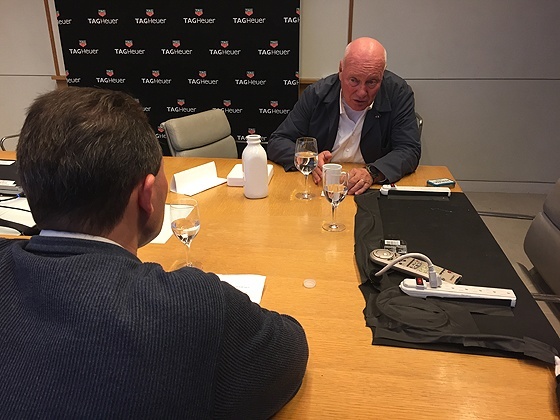
WT: So you’ve known all along that it was going to be TAG, and you partnered with Google and Intel. How much of the finished product is yours? What did you insist upon to make this product stand apart from the Apple Watch and other smartwatches?
JCB: The design and the material is 100 percent ours. So are the decisions on size and proportions and bracelet [options]. Those were our decisions. What was not our decision — what was in negotiations — was the inside. The inside had to be decided with Intel. We wanted this design to not look like a connected watch. If I show you 20 other connected watches, you will immediately recognize what they are. All connected watches look the same, more or less! Our challenge was, “Let’s make a connected watch that doesn’t look like a connected watch but looks like a TAG Heuer watch.” If you see this watch, you’ll see that it looks like a TAG Heuer.

WT: You describe the watch as a luxury product. What steps did you take to ensure that it conveyed luxury as well as TAG Heuer DNA?
JCB: Luxury comes from quality first, and also from the service you offer — we have a two-year guarantee. Then it’s the finishing, the materials, and the exclusivity. Even if we are very successful with it, we will never produce a million pieces. And we will not want to. Because we want to preserve exclusivity. It’s not exclusivity at the same level as Hublot, but at this price range, I believe exclusivity means that we should not go over 700,000 altogether. Which means if the connected watch becomes 10 percent of our business, we would produce 70,000 pieces — which is tiny compared to the 7 million watches that Apple is selling.
WT: On the “eternity” concept — which certainly does make this watch distinctive from other smartwatches and connected watches — where did that idea come from?
JCB: It comes from my obsession with eternity! I came face to face with eternity in 1981 after I bought Blancpain. “Since 1735 there has never been a quartz Blancpain and there never will be one.” That was our ad in 1981. Back then, they asked me, “What’s wrong, Mr. Biver, why don’t you do quartz??” [My answer was that] a quartz watch is not eternal. One day it will be irreparable. The chips won’t exist or the battery will evolve or be discontinued. I have always been obsessed with eternity. So… would I let TAG Heuer create a connected watch that you’ll have to throw away in five years? No. So I said, we must offer — at least offer, not everyone will take it — everyone a chance to exchange his watch for a mechanical one. For an additional $1,500 after two years, we will transform your connected watch into an automatic watch.
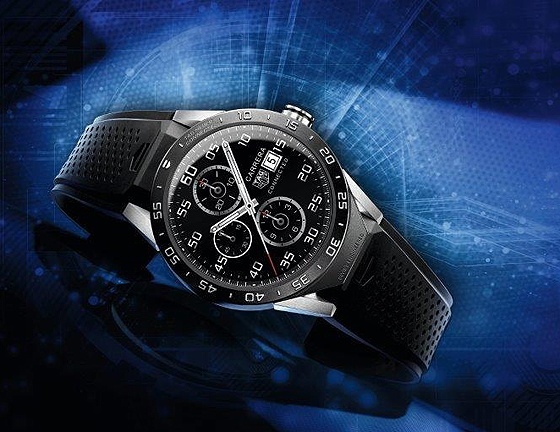
WT: But do you feel that it is the same customer — someone who wants a mechanical Carrera and someone who wants a smartwatch?
JCB: No, it’s not the same. We are targeting a new customer — somebody who might never buy a [first] watch that isn’t connected. For a young guy, why would he pay $700 for a quartz watch that only tells him the time? For essentially the same price, he can get a connected watch.
WT: So the idea is that the new customer you’re describing will mature into someone who will eventually want a traditional mechanical watch?
JCB: Yes, I think that once we have a TAG Heuer on his wrist, it is easier to sell him a second one. What’s always difficult is getting on his wrist in the first place.
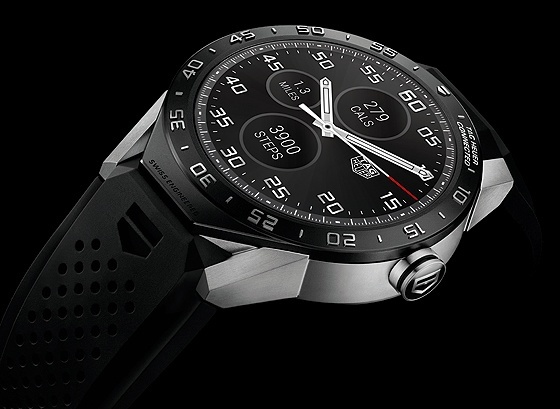
WT: So the thinking is that the customer will want something mechanical next rather than an upgraded connected watch?
JCB: If he wants an upgraded connected watch, we can give him that, too. Why not? Our watch will not just stay as it is – it will have upgrades, new materials, new features… we’ll have a ladies’ version.
WT: And if the customer decides he wants to upgrade to a mechanical after five years rather than two?
JCB: Good for him! That mean’s he’s enjoyed the connected watch for five years. I wish everyone would take five years. We only said two because that’s the length of the guarantee.
WT: How would you respond to those in the hardcore collector community — those who regard TAG Heuer as a historical, collectible traditional watch manufacturer — who might be skeptical about what the connected watch means for the future of the brand?
JCB: I would say it is only a part of the future. The future of TAG Heuer is not only the connected watch but the future of TAG Heuer includes the connected watch. If you know about the brand, you know that its motto is “Swiss Avant Garde Since 1860.” A connected watch is avant garde, no? If we are truly avant garde, we need to offer a connected watch. It’s like asking if Porsche is going to become Tesla and offer only electric cars. Of course not — you can buy a Porsche Cayenne that is electric or hybrid, but it will not change the overall strategy of Porsche. Even Ferrari is offering electric cars among its offerings. But it’s only one part.
